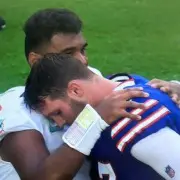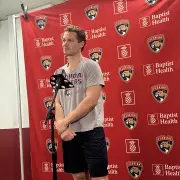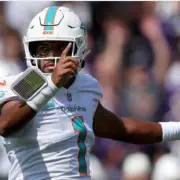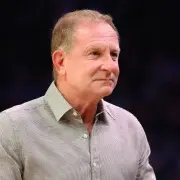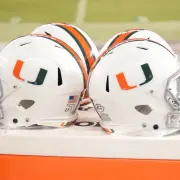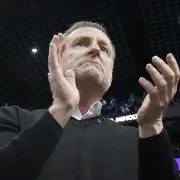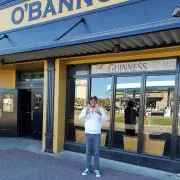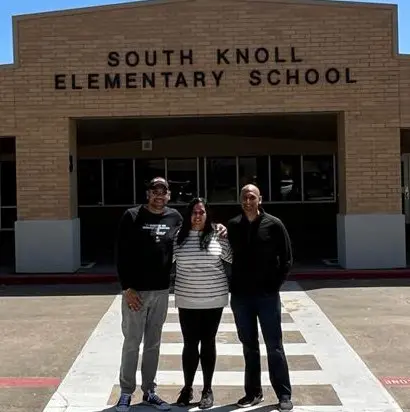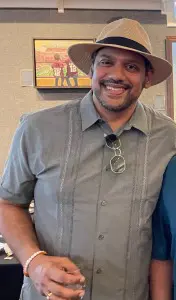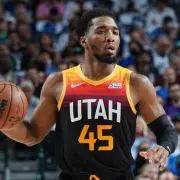Pressure Point: 3-0 Dolphins may be building something special
There are so many enduring images from the Miami Dolphins’ most unconventional of victories against their AFC East nemesis, the Buffalo Bills.
The final one, of Tua Tagovailoa consoling Bills all-everything quarterback Josh Allen, was due to the one that finally brought the Allen tsunami to a halt.
That was the one of the never-quit Dolphins defense exemplified by veteran linebacker Melvin Ingram on the final play Sunday at Hard Rock Stadium. Ingram, after just missing a sack on Allen on the blitz, turned and dashed 17 yards to tackle Isaiah McKenzie before the Bills receiver could get out of bounds, effectively killing the clock.
After time expired, Allen slammed his helmet on the turf and McKenzie dropped down onto his side. A few seconds later Ingram also flopped down on his back. All of them literally run down to empty, totally, utterly spent.
What an ending to the Bills-Dolphins game! #BUFvsMIA pic.twitter.com/yjlc3H0wUi
— NFL (@NFL) September 25, 2022
Dolphins win rope-a-dope
That told the story of a brutally searing September Sunday in South Florida. Rarely, if ever, have we seen so many players leave everything they have literally on the field, exhausted.
The Bills offense was like a revolving door of players leaving the field to be treated for cramping because the Dolphins defense couldn’t get them off the field all day.
Somehow the Dolphins ended a seven-game losing streak to the Bills 21-19 to improve to 3-0 despite Buffalo possessing the ball for nearly 41 minutes and piling up 497 yards to 212 for Miami.
This should be remembered as the Dolphins’ rope-a-dope win. Muhammad Ali would have been proud. They withstood all the punches Allen threw at them, and they seemed endless.
It wouldn’t be surprising if Dolphins defenders have visions of Allen in their sleep for a week. He accounted for 447 yards passing and rushing. He threw 63 passes and rushed eight times.
Dolphins overcome unlikely obstacles
The Dolphins came out of the epic struggle as the lone unbeaten team in the AFC (including 2-0 in the AFC East).
There was no way anyone could have scripted it, but for the second week in a row the Dolphins pulled off a win against a quality opponent that defied explanation.
More of those head-scratching images:
Tagovailoa wobbled off late in the first half after getting thrown down like a ragdoll. He returned after halftime and made one of the best throws of his career on third-and-22 for 45 yards to Jaylen Waddle to set up the go-ahead touchdown.
Then the ridiculous “butt punt” by Thomas Morstead off the backside of Trent Sherfield for a safety that gave the Bills one more chance to drive for a potential winning score. Credit Morstead with a quality punt after the safety to pin the Bills back at their own 23 to start that final possession.
Two weeks in a row the Dolphins have prevailed in games they really had no business winning — the 21-point comeback in the fourth quarter against the Ravens and then over a Bills team that kept on coming like a gang of zombies. It tells you there is something very different and potentially very special about this Dolphins team.
There is talent on offense that they haven’t had since the Marino years, a creative and unconventional young coach and a never-quit spirit shown by Ingram on the final play, and by the collective all day.
Which left the Bills exasperated, especially offensive coordinator Ken Dorsey, who had an epic meltdown in the coaches’ booth after Ingram’s final tackle:
#Bills OC Ken Dorsey LOST IT in the coaching booth. Oh my.pic.twitter.com/x1WcoSTY1c
— Ari Meirov (@MySportsUpdate) September 25, 2022
Tua’s back a concern
But it is just a building block. As Tyreek Hill said, “A lot of people are gonna look at this like the Miami Dolphins are here. This is just another win.”
There are also concerns, notably Tagovailoa’s back, which he hurt on a quarterback sneak and was given as the reason he stumbled and fell after the bump on his head.
That will be evaluated further on Monday. The next game is Thursday night at Cincinnati. So no rest for these weary Dolphins. But being 3-0 helps.
Craig Davis has covered South Florida sports and teams, including the Dolphins, for four decades. Follow him on Twitter @CraigDavisRuns
More from Five Reasons: Tua, defense help Dolphins slip past Bills, lead AFC East
